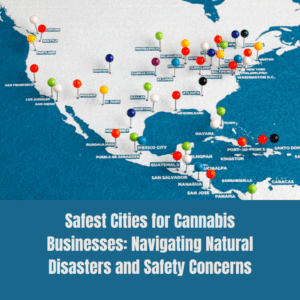OMMA’s New Rules for Oklahoma Medical Cannabis

New Medical Cannabis Regulations Take Effect in Oklahoma: What You Need to Know
Oklahoma’s medical cannabis industry has entered a new regulatory phase with the implementation of several new laws and rules aimed at enhancing safety, compliance, and oversight. Effective Thursday, these regulations introduce stricter requirements for testing and labeling of cannabis products, mandate credentials for industry employees, and authorize the use of “secret shoppers” to ensure adherence to state guidelines.
Key Regulatory Changes in Oklahoma’s Medical Cannabis Industry
The Oklahoma Medical Marijuana Authority (OMMA) announced these changes following a public comment period and hearing, during which they received 187 comments from businesses, patients, and the public. The rules, codified under various sections of the Oklahoma Administrative Code (OAC), are designed to address safety, standardization, and operational transparency in the industry.
Enhanced Testing and Labeling Requirements
To strengthen patient safety, new standards have been established for testing laboratories, ensuring consistency and reliability in product testing. These standards are detailed in OAC 442:10-8-1 through OAC 442:10-8-5, focusing on comprehensive testing protocols that cannabis products must meet before reaching the market.
Employee Credentialing
Under the new regulations (OAC 442:10-5-1.1(f) and OAC 442:10-5-16(v)), all employees working in licensed medical marijuana businesses must now obtain a credential from the OMMA. This requirement is aimed at ensuring that employees are adequately trained and authorized to handle cannabis products, enhancing overall operational integrity.
Commercial Licensing Fees and Background Checks
The regulations also introduce changes to commercial licensing fees (OAC 442:10-1-4) and clarify the requirements for national fingerprint background checks to be conducted by the Oklahoma State Bureau of Investigation (OSBI), as outlined in OAC 442:10-1-5(a). These measures are intended to enhance security and ensure that only qualified individuals are involved in the cannabis industry.
Operational Compliance and Monitoring
The OMMA has also introduced several operational compliance measures, including requirements for certificates of occupancy (COOs), product tagging and storage, and grower bonds. Notably, the OMMA is now permitted to employ “secret shoppers” (OAC 442:10-5-4(l)) to inspect licensed businesses covertly, ensuring compliance with all state regulations.
Quality Assurance and Voluntary Validation Programs
To further enhance product quality, OMMA may operate or contract quality assurance laboratories (OAC 442:10-8-5). Additionally, a voluntary process validation program for commercial licensees has been established (OAC 442:10-11-1), providing businesses with a framework to ensure their operations meet state standards.
Additional Regulatory Provisions
Other notable regulations include prohibitions against hiring undocumented immigrants by growers (OAC 442:10-5-16(u)), penalties for failing to remit taxes (OAC 442:10-5-6.1(h)), and a continuation of the moratorium on processing and issuing new business licenses (OAC 442:10-5-3(h)). The rules also address requirements for patient information in the state inventory tracking system and reflect changes in OMMA’s funding as appropriated by the Legislature.
Impact on Businesses and Patients
These new regulations represent a significant tightening of oversight in Oklahoma’s rapidly growing medical cannabis industry. For businesses, compliance will require careful attention to the new standards, particularly in areas like employee credentialing and product testing. Patients, on the other hand, can expect enhanced safety and quality assurance from the products they consume.
As the state continues to refine its regulatory framework, stakeholders in the medical cannabis industry must stay informed and proactive in meeting these evolving requirements. The implementation of “secret shoppers” and stringent testing protocols underscores the state’s commitment to maintaining a safe and transparent market for medical cannabis.
The latest regulatory changes in Oklahoma’s medical cannabis industry highlight a broader trend toward increased scrutiny and regulation. By setting higher standards for testing, employee credentialing, and operational compliance, the state aims to protect patients and ensure that the medical cannabis market operates safely and effectively. Businesses and consumers alike will need to adapt to these new requirements, as the state continues to develop its oversight mechanisms.
These changes mark a crucial step in the maturation of Oklahoma’s medical cannabis industry, with implications for stakeholders across the state.











